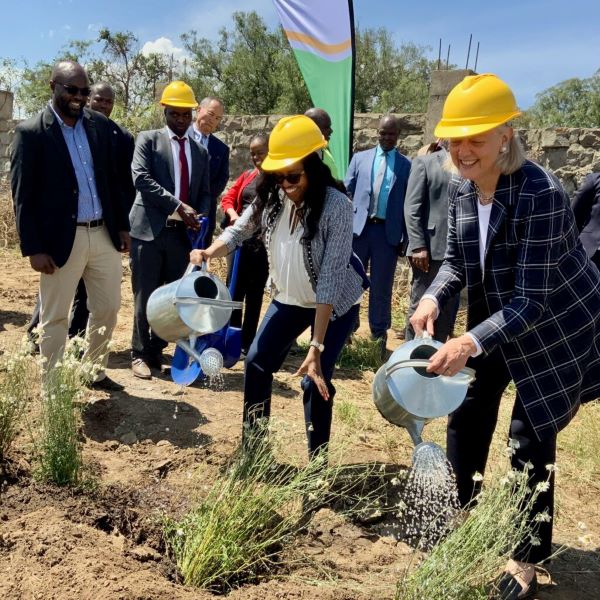
The United States government has committed $12 million to support the revival of the pyrethrum industry in Kenya with a focus on uplifting small-scale farmers.
According to Meg Whitman, the US Ambassador to Kenya, $10 million part of the money will go towards constructing a modern pyrethrum processing plant in Naivasha.
“This plant once complete will serve over 90,000 small-scale farmers and this is part of the US-Kenya trade partnership,” she said.
The ultra-modern Kentegra Biotech pyrethrum processing plant in Naivasha, once completed, is projected to process 300,000 tonnes of pyrethrum by the end of this year and more than 750,000 tonnes by 2025.
The sector collapsed in the 90s, however, Whitman lauded the government’s initiative towards supporting investors to revive it.
She promised her government’s continued trade support and said she would rally ten other counties to join in the growing pyrethrum in the country.
The factory which had been funded by the US International Development Finance Corporation will provide a market for smallholder pyrethrum farmers within and outside Nakuru County.
Kentegra is a leading US-Kenyan biotech company that specializes in the production of organic insecticide pyrethrum.
The processing plant will occupy 12 acres of land within the ‘New Vasha Special Economic Zone’ and will be situated across the Delamere stop shop on the Naivasha-Nakuru highway.
Game changer
Nakuru County Governor Susan Kihika termed the billion shilling investment a game changer for pyrethrum growing in the region.
“Our resolve as Nakuru County government is to restore pyrethrum as the county’s main commercial crop is driven by the fact that a decade ago Kenya accounted for 80 per cent of all pyrethrum bought by international companies.”
She added that the potential for pyrethrum farming stands at 30,000 acres of land but only 2,148 acres of land is currently under pyrethrum production.
The governor noted that pyrethrum farmers face challenges with inadequate funding, inadequate planting materials, competition from higher-value crops, poor pricing, post-harvest losses, pests and diseases, high labour costs, as well as poor infrastructure.
“To solve these issues the county government is working in concert with other players in the subsector providing seedlings to farmers, promoting contract farming between farmers and processors Kentegra, such as Pyrethrum Processing Company of Kenya (PPCK) and Africhem Botanicals, ensuring timely payment of farmers and provision of extension services, as well as providing farmers with modern dryers in partnership with stakeholders such as Good People International,” she observed.
Pyrethrum production
In the 1990s, pyrethrum was the 3rd largest Kenyan export crop, providing an income for over 200,000 smallholder farmers.
Kenya was controlling over 90 per cent of the world pyrethrum market while today its share is two per cent. Production of pyrethrum in the country declined from a high of 18,000 tons in 1992 to the current national production of less than 500 tons per year.







